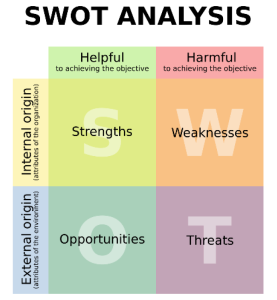A business plan is a formal document that outlines a company’s goals, strategies, and how it plans to achieve them. It serves as a roadmap for business operations and is often used to attract investors, secure loans, or can be used as a tool to make strategic business decisions.
A business plan helps you define your vision, set goals, and outline the steps needed to achieve them. It keeps you on track as you grow. Investors and banks will want to see a well-structured business plan before providing funds. It shows them that your business is viable and worth the investment. By researching your industry and competitors, you gain valuable insights into your target audience and market trends, helping you make informed decisions. A business plan forces you to think through potential challenges and risks, allowing you to prepare solutions in advance. With financial projections, budgets, and revenue estimates, you can better manage your cash flow and avoid financial pitfalls. It serves as a reference point to measure progress, track performance, and adjust strategies when necessary. Businesses with a solid plan are more likely to succeed because they have a structured approach to growth, operations, and problem-solving.
An executive summary is a brief yet comprehensive overview of a business plan. It highlights the most important aspects of your business, giving readers a quick understanding of your company’s goals, strategy, and financial outlook. It’s typically the first section of a business plan but is often written last.
A company description is a section of a business plan that provides detailed information about your business, including its purpose, structure, history, and goals. It helps investors, lenders, and stakeholders understand what your company does and why it exists. This is where you will also include your company’s vision and mission statements.
A company description is important because it establishes your business identity and purpose, helps potential investors and partners understand your vision, and provides clarity on your legal and operational structure.
The market analysis component of your business plan examines your industry, target market, competitors, and overall market conditions. It helps you understand your customers, identify opportunities, and position your business effectively. Here, you will conduct an industry overview, target market, market growth potential, customer trends, a competitive analysis (product differentiation and unique selling proposition), possible barriers, and pricing & market position.
An organizational/management structure defines how a company is structured, including roles, responsibilities, and hierarchy. It helps businesses operate efficiently by outlining who makes decisions, how teams are organized, and how information flows within the company.
There are many types of organizational structures, however you may be familiar with these;
– Hierarchical Structure: A pyramid-shaped structure with a clear chain of command from top to bottom. This structure typically works best for large corporations and government agencies.
– Functional Structure: Employees are grouped by department (e.g., marketing, finance, HR) based on their skills. This structure typically works best for medium to large businesses with specialized departments.
– Divisional Structure: Company is divided into semi-independent divisions based on products, geography, or market segments. This structure typically works best for large companies with multiple product lines or global presence.
– Matrix Structure: Employees report to both a functional manager (e.g., marketing) and a project manager. This structure typically works best for companies managing multiple projects or cross-functional teams.
A financial projection is an estimate of a business’ future financial performance based on current data, market trends, and planned strategies. It helps business owners, investors, and lenders understand how a company expects to generate revenue, manage expenses, and achieve profitability over time. Financial projections are typically created for three to five years and include estimates of sales, expenses, profits, cash flow, and overall financial health.
Our Cash Flow Forecast tool may come in handy here!
(Download Cash Flow Forecast PDF)
A SWOT analysis is a strategic planning tool used to evaluate a business’s Strengths, Weaknesses, Opportunities, and Threats. It helps businesses understand their internal and external factors to make better decisions and stay competitive.
Opportunities & Threats- External
Strengths & Opportunities- Helpful
Weaknesses & Threats- Harmful

 The interactive Futurpreneur business plan writer is designed to simplify the business planning process by allowing you to customize your plan. We also provide tips & tricks, and plenty of examples to guide you as you write.
The interactive Futurpreneur business plan writer is designed to simplify the business planning process by allowing you to customize your plan. We also provide tips & tricks, and plenty of examples to guide you as you write.
Visit the Futurpreneur website and create an account to use this tool and to check out more resources they offer for small businesses.
https://futurpreneur.ca/en/resource/business-plan-writer/
The business model canvas is a tool entrepreneurs use to map out a business or product’s key drivers, activities and resources, the value proposition for target customers, customer relationships, channels involved and financial matters. It gives an overview to help identify requirements to deliver the service and more. The Business Model Canvas consists of nine essential parts: Customer Segments, Value Proposition, Revenue Streams, Channels, Customer Relationships, Key Activities, Key Resources, Key Partners, and Cost Structure. These are all things that need to be taken into consideration before moving forward with your venture.
Click Here For Some Examples (Downloadable PDF)